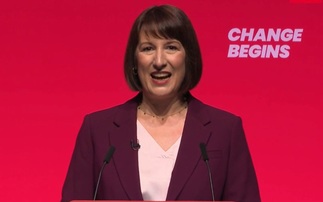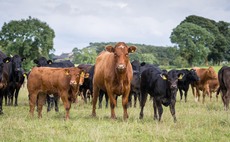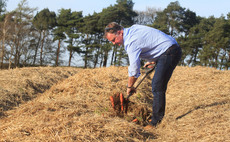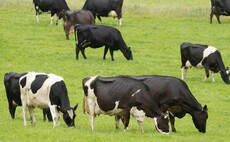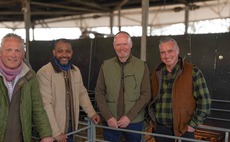
Chancellor Rachel Reeves announced that 100% tax reliefs on inherited agricultural assets would end in April 2026. But what was the historical significance of reliefs and why were they introduced in the first place?
Chancellor Rachel Reeves' changes to Inheritance Tax (IHT) have been met with outright indignation and frustration by farmers ever since she made the announcement at the Autumn Budget.
Farmers have been holding passionate rallies, protests and marches across the UK for nearly six months to demonstrate their concern regarding how IHT changes could alter the dynamics of generational and family farming completely.
READ NOW: Young farmers to vote on 'detrimental impact' of IHT changes
From April 6 2026, Ms Reeves proposed reforms to Agricultural Property Relief and Business Property Relief, which could see farmers facing a 20% tax when inheriting agricultural assets worth more than £1 million.
Inheritance Tax, Agricultural Property Relief and Business Property Relief
The farming sector has claimed it could force small family farms to give up farming and sell all or parts of their businesses in order to pay a tax bill.
Adam Barrass, manging director at Vickers and Barrass, said: "Since Rachel Reeves' October Budget, we have received 100s of calls around the implications of IHT changes.
"Inevitably, it is affecting the rural community massively. Not just farmers but businesses including vets, feed merchants, agricultural dealers.
"They are all impacted by the changes. I have had disturbing phone calls from clients who have talked about taking their life before April 2026 because of tax changes as they will not be taxed.
LISTEN NOW:
"The average farmer has worked all their life to ensure they can pass down their asset to the next generation.
"They cannot afford the tax bill because their asset is tied up in the land to produce food for the country.
Tax implications
"If they have to sell an asset to pay the bill, they are reducing their business capability which will impact their overall business structure."
Fifth generation sheep farmer Clare Wise, from Little Stainton near Darlington, said: "We feel people forget how many farmers are producing their food locally.
"Farmers are hard working families. I do not think they [the Government] understand the massive unintended consequences of the Budget.
Save family farms
"The Government need to sit at the table and they need to help us sort this out and save family farms.
"I hope people are reminded that they are being fed by farmers because we feel forgotten that people do not recognise the role of the rural economy in food production, nature restoration and the environment."
Historical context of IHT
So in the context of safeguarding agricultural reliefs in the future, farm tax experts have provided a historical summary of the decision to introduce APR, its many forms over the years, its inception as early as 1894, and why it is still important to protect those reliefs for farmers today and in the future.
CAAV
Jeremy Moody, secretary and adviser at the Central Association of Agricultural Valuers (CAAV), said partial agricultural relief from Estate Duty was introduced by the Labour Government in 1949 under Prime Minister Clement Attlee.
Mr Moody provided a brief outline of APR's timeline since 1949:
-
When Capital Transfer Tax (CTT) was introduced in 1975 (replacing Estate Duty) with high rates of tax, Working Farmer Relief was also introduced on up to £250,000 or 1,000 acres – this did not offer relief for the let sector
-
BPR was introduced in 1976
-
That was replaced by APR in 1981 with a relief also on let land so there was rough equality in the tax charge whether land was in hand or let, a principle broadly held to ever since – a 50% relief on owner occupied and a 30% relief on let land
-
The CTT legislation (largely in the Finance Act 1975) was then consolidated as the CTT Act in 1984.
-
That was relabelled the Inheritance Tax in 1986
-
In 1992, the main relief was raised to 100% and let land to 50%, creating a brief disparity – effectively by accident – and BPR was raised from 50% to 100%
-
In 1995, the rate for land let from September 1995 was raised to 100%, leaving earlier lettings at 50%.
Mr Moody added: "The stated reason for APR has always been to avoid the break-up of farming units. APR [unlike BPR] also covered farmhouses that are often integral to a farm.
PLEDGE YOUR SUPPORT: Join Farmers Guardian's Save Britain's Family Farms campaign
"Baroness Penn told the House of Lords in 2020 on behalf of the Treasury in reply to a question on the APR and BPR from IHT: 'While we recognise that there are some concerns, the policy intention behind those exemptions is to allow family farms and businesses to be passed on without having to be broken up to pay IHT. We think that that is an important aim'."
Saffery
Lucy de Greeff, director at Saffery, said: "The current 100% relief from IHT in the form of APR was introduced in 1992, although it was available at lower rates prior to this point.
"Historically, some form of IHT relief for agricultural value of land/assets goes back to the days of Estate Duty.
"The Finance Act 1925 included a provision that 'estate duty…shall be charged on the amount by which the principal value of the agricultural property exceeds the agricultural value'.
"When Capital Transfer Tax replaced Estate Duty from March 1974 [this was later renamed IHT], the Finance Act 1975 made provision for a form of relief for agricultural property valued up to £250,000 or an area up to 1,000 acres [405 hectares]."
And why is IHT relief for agricultural assets important?
Ms de Greeff explained: "Farming is generally a capital-intensive industry, in which the rate of return on capital is low [especially in comparison to income from other forms of property].
SIGN THE PETITION: Embed food, farming, and sustainability education into the national curriculum
"The result is that IHT on agricultural property without reliefs is often beyond the means of the person paying it, without selling off some of the property itself.
"This is alleviated in part by the provisions to pay the tax in interest-free instalments [which the Budget announced would apply more widely given the changes]."
Armstrong Watson
Andrew Robinson, accounting partner at Armstrong Watson, said: "There had been various smaller reliefs for agricultural property in the mid-1970s but the APR as we know it was brought in in 1984.
"There have been various tweaks to the rates applicable since then."
According to Mr Robinson, the introduction of APR was, and still is, two-fold.
"Firstly, the most important thing to consider is that the then policy makers understood that even in the 1980s, agriculture was a very capital-intensive business with a high value of assets but a relatively low level of return from those assets compared to other businesses," he added.
"They accepted this meant that agricultural businesses therefore had less capacity to pay IHT tax from earnings, this would result in family farming businesses being sold or broken up to pay the tax which they did not want to happen to the sector.
"Secondly, it was brought in to allow family farming businesses to be handed down a generation without any of the asset being lost to tax.
"Ever since the legislation was introduced, APR has only covered the agricultural value of farmland and property, and not on farming value, so it really was aimed at protecting working family farms.
'APR is still needed for the same purpose as it was in 1984'
"You will see that from above nothing much has changed, we are still trying to get the Government to understand that it is still needed for the same purposes as it was in 1984.
"Agriculture is now an even more high capital value business with relatively low returns on those asset values."
S&W
Aloysia Daros, partner at S&W, formerly Evelyn, said: "APR was introduced alongside IHT as a successor to the various forms of relief that existed pre-IHT.
'Investment in the future'
"Various academic studies have demonstrated that any form of death duty inhibits a business from investing in its future as it saves funds to pay the impending tax liability.
"Various forms of tax on inheritance go back to antiquity, but the clear predecessor of modern UK IHT was Estate Duty, which was introduced in 1894.
"Initially it was fairly simple, but reliefs, exemptions, and modifications were gradually added in response to issues."
Ms Daros went on to reference changes made some 31 years later.
"In 1925 a relief for agricultural property came in, giving different rates for the agricultural value of this property and for the additional value of it over that amount," she added.
"Modern sounding quotations include 'the tax will do good to the agricultural industry as a whole by exempting this particular class from the increase in the Death Duties' and 'there is no evidence, that a single penny of this relief will go to improve farming at all'.
'Breaking up estates'
"The only substantial argument put forward in defence of this special exemption was that used by the Financial Secretary the other day, that, unless landed agricultural estates are relieved of increasing taxation of this kind, the result will be that the estates will be broken up."
And then 50 years, Estate Duty was replaced by the 'less generous CTT in 1975.
Ms Daros said: "Reliefs under this were less generous and harder to obtain.
"From introduction, CTT had 'working farmers' relief' to reduce the bill on agricultural property.
"This had requirements based on the transferor working as a farmer and deriving the majority of their income from farming. It was capped by value and land acreage.
"It was introduced to 'ease the burden which would fall on transfers of agricultural land owned and farmed by full-time working farmers'.
"When IHT replaced CTT in 1984 APR was included, though only at 50%.
"100% APR was included in changes to IHT in 1992 [under Prime Minister Sir John Major]."
In summary, Ms Daros said the intention of APR, like many other tax experts, was to protect farming businesses from being 'broken apart'.
"Overall, the current system of APR has developed over many years," she added.
"The general intention was to avoid forcing the sale or break-up of farms, as businesses that are generally heavy on capital assets compared to income.
"In both predecessor taxes to IHT it was found necessary to give relief, the value of which was increased.
"The changes to the new system seem to be a combination of the cap on relief, a feature of the CTT system, and a 50% rate, a feature of the original IHT system in 1984.
"They do not seem to have been previously combined. The debate over the best system of relief is unlikely to end here."
Chances of a u-turn?
Could there be a point in the near future when the Government realises the wider implications of its actions?
For 131 years, Governments have warned about the need to protect farms and estates from being broken up, and APR was a 'vital and necessary' part of doing that.
However, Prime Minister Sir Keir Starmer and his Labour Government has chosen to remain steadfast in rejecting projections from tax experts, rural organisations and farmers that more than 40,000 farms could be affected in the near future.
Instead, any discussion of APR changes with Government or any Labour MP will more than likely contain the words of providing farmers with a 'record' budget worth £5bn.
But is this enough to lay fears, as mentioned above, regarding the impending changes which are less than a year away from becoming a reality for farmers across the UK.
A spokesperson said: "Our reform to APR and BPR will mean three quarters of estates will continue to pay no inheritance tax at all, while the remaining quarter will pay half the IHT tax that most people pay, and payments can be spread over 10 years, interest-free.
"This is a fair and balanced approach which helps fix the public services we all rely on."
READ NOW: New Clarkson's Farm series to document one of the 'toughest years' for British farming















